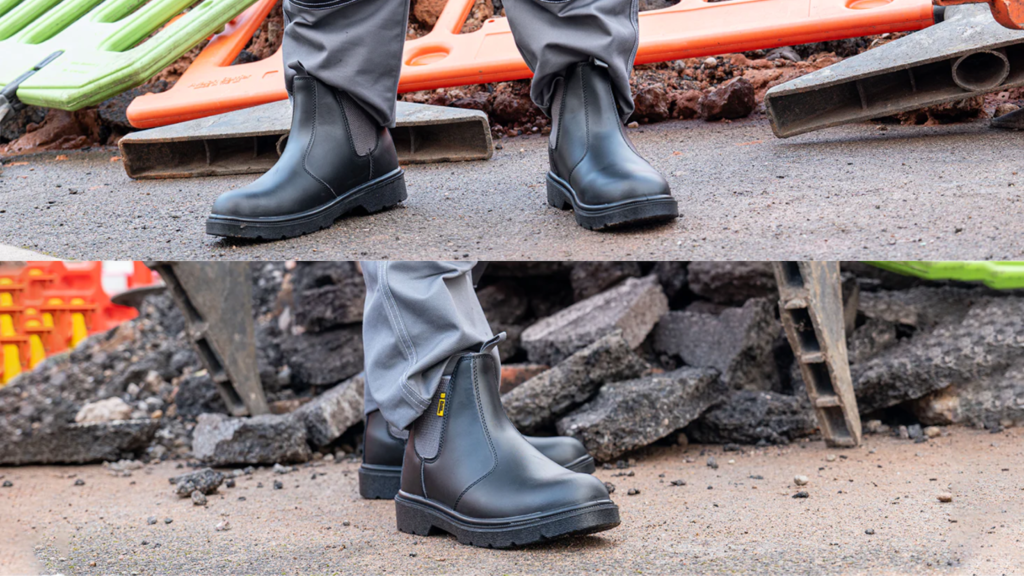
Today, due to hectic schedules, taking care of our feet frequently takes a backseat, even though they are vital to keeping us safe and comfortable. This is especially true for males who work in challenging workplaces with a lot of hazards, including big things, sharp objects, and slick surfaces.
Men's safety boots stand out as a crucial safeguard at this point due to the importance of appropriate foot protection. These boots are made not only to be comfortable throughout lengthy workdays but also to guard against potentially harmful accidents.
We'll look into the significance of men's safety footwear in this investigation to ensure both health and productivity in demanding labour.
The Significance of Foot Safety
Vulnerabilities in the Workplace
Workplaces, ranging from construction sites to manufacturing plants, are fraught with potential hazards that can cause severe foot injuries. Falling objects, sharp tools, heavy machinery, and slippery surfaces are just a few examples of the risks workers face daily. Failure to adequately protect feet can result in injuries such as fractures, punctures, lacerations, and crush injuries.
Impact on Overall Safety
Feet are a crucial part of the body's structure, supporting our weight and enabling mobility. Injuries to the feet can have a cascading effect, impacting overall safety. A worker with compromised foot health might struggle to maintain balance or manoeuvre properly, increasing the risk of accidents not only to themselves but also to their colleagues.
Understanding Safety Boots
Design and Composition:
Safety boots are specially designed footwear constructed to withstand a range of workplace hazards. They typically have reinforced toes, often made of steel, composite materials, or aluminium, which provide protection against falling objects and compression. The midsole is designed to prevent punctures from sharp objects, and the outsole offers slip resistance and stability. These boots are often made of durable materials like leather, synthetic fabrics, and rubber.
Variety of Protection:
Men's safety boots come in various categories, each catering to specific workplace risks. Steel-toed boots offer excellent protection against impact, while composite-toed boots are non-metallic and suitable for areas with metal detectors. Electric hazard boots protect against electrical shocks, while chemical-resistant boots are crucial for industries dealing with hazardous substances.
Benefits of Men's Safety Boots
Injury Prevention:
The primary benefit of safety boots for men is the prevention of foot injuries. They act as a sturdy barrier between the feet and potential hazards, reducing the likelihood of serious injuries such as fractures, amputations, and lacerations. By providing effective protection, safety boots mitigate the impact of workplace accidents.
Enhanced Productivity:
When workers feel safe and secure, their confidence and overall morale improve. Safety boots contribute to a sense of security, allowing employees to focus on their tasks without constant worry about foot injuries. This improved peace of mind can lead to increased productivity and a better quality of work.
Regulatory Compliance:
Many industries are subject to regulations and standards that mandate the use of appropriate PPE, including safety boots. Compliance with these regulations not only ensures the safety of workers but also prevents potential legal issues for employers. Non-compliance can result in penalties and legal liabilities.
Long-Term Foot Health:
Foot injuries can have long-lasting effects, impacting a worker's quality of life even beyond their professional life. Safety boots provide adequate support, reducing strain and fatigue during long hours of work. This, in turn, contributes to better long-term foot health, minimising the risk of chronic conditions.
Choosing the Right Safety Boots
Assessment of Workplace Hazards:
Selecting the appropriate safety boots starts with a comprehensive assessment of the specific hazards present in the workplace. Different industries and tasks necessitate different levels of protection. Understanding these risks helps in choosing boots with the right features, such as the type of toe protection and sole material.
Proper Fit and Comfort:
Safety boots that are uncomfortable or don't fit well can lead to issues such as blisters, corns, and calluses. Workers should prioritise boots that provide a snug fit without being too tight. Many modern safety boots are designed with comfort in mind, incorporating features like cushioned insoles and breathable materials.
Durability and Maintenance:
High-quality safety boots are an investment. Durability is a key factor, especially in industries with harsh conditions. Boots should be easy to clean and maintain to ensure their longevity. Regular inspection and replacement of damaged boots are essential to guarantee continued protection.
Conclusion
In the grand tapestry of workplace safety, the significance of proper foot protection often goes unnoticed. However, the feet are the foundation on which a worker's mobility and overall well-being depend. Men's safety boots play a pivotal role in safeguarding these essential body parts from a range of workplace hazards.
By preventing injuries, boosting productivity, ensuring regulatory compliance, and contributing to long-term foot health, safety boots stand as a crucial line of defence in various industries. Choosing the right safety boots, tailored to specific workplace risks and individual comfort, is an investment that pays dividends in both safety and peace of mind.
If you are wondering where to buy comfortable safety boots, you can rely on Black Hammer. For more information, visit the website.
High-quality safety boots are an investment. Durability is a key factor, especially in industries with harsh conditions. Boots should be easy to clean and maintain to ensure their longevity.

Post new comment
Please Register or Login to post new comment.